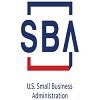What are FDA combination products, and why are they important?
08/16/2021
Category: Other Blogs
FDA that is Food and Drug Administration, is a regulatory board that approves drugs and other related items. Therapeutic or diagnostic products that combine medication or biologic with a drug delivery device are called combination products. These FDA combination products contain two or more types of drugs and are approved by the Food and Drug Administration (FDA).
The FDA Office of Combination Products requires that combination products submit a request for designation (RFD). A company can get a formal agency-like determination on which FDA center to partner with, creating a novel combination product by submitting an RFD.
Why are FDA combination products essential?
Combination medicines make it easy to give pharmacological or biological therapy efficiently, securely, and easily. The capacity to safely give medicine that is only available in injected, inhale or transdermal form without the intervention of a medical professional provides enormous ease. It increases the quality of care for people in general.
When medicine or biologic is included in a combination product, the Food and Drug Administration (FDA) may assign a new center to oversee the product’s approval rather than the center that oversees medical device evaluations.
Most New Drug Applications (NDA) and Biologic License Applications (BLA) involving combination products are reviewed by the Centres for Drug Evaluation and Research (CDER) and the Centre for Biologics Evaluation and Research (CBER), respectively, while the Centre for Devices and Radiological Health (CDRH) reviews and Premarket Approval (PMA) applications for medical products.
FDA Combination products may also have a role in the progression of HCT/Ps. Such items will be subject to certain GMP and quality rules that must be met. A product consists of any combination of a drug and a device; a biological product and a device; a drug and a biological product; or a drug, device, and biological product, according to the FDA.
A product like an auto-injector, where the drug to be given is preloaded into the device, and the product is advertised and supplied as a separate unit, is the most prominent example used to show a combination product. This is a combination product that could be employed for cellular therapy in the future. On the other hand, the FDA recognizes additional medication, device, and biologic combinations as FDA combination products.
To be classified as an FDA combination product by FDA, two or more regulated components must be physically, chemically, or otherwise joined or mixed and created as a single entity or two independent goods packed together.
The field of combination products promises breakthroughs in drug delivery that have never been seen before. Smartphone app compatibility, global location technology, and smart features embedded into equipment and packaging are all on the horizon.
A brief search for novel combination items turned up a tattoo-like skin patch for diabetics to monitor blood sugar levels in the wearer’s sweat and give medication as necessary. While not yet given permission, innovations like these are becoming more common as the market’s expectations for convenience of use, constrained free-living, and connection with smart devices rise.
tagging: FDA Combination products


